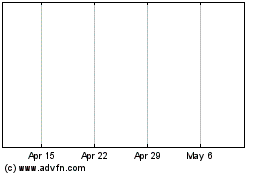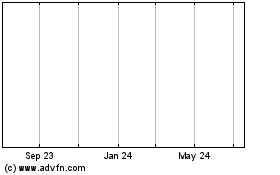Majority of Employers with Consumer-Driven Health Plans Prefer Health Savings Accounts, Says Aon Consulting
November 16 2009 - 10:00AM
PR Newswire (US)
CHICAGO, Nov. 16 /PRNewswire-FirstCall/ -- Of employers who offer a
consumer-driven health plan, Health Savings Accounts(1) continue to
be the preferred funding choice among organizations, according to a
survey released today by Aon Consulting, the global human capital
consulting organization of Aon Corporation (NYSE:AOC), and the
International Society of Certified Employee Benefit Specialists, a
premier community of employee benefits and compensation
professionals. (Logo:
http://www.newscom.com/cgi-bin/prnh/20041215/CGW049LOGO) Of the 370
survey respondents, 44 percent of employers currently offer a
consumer-driven health (CDH) plan to employees, which is similar to
last year but significantly higher than in 2006 when only 28
percent of employers offered this type of plan to their workforce.
Of those offering CDH plans this year, 56 percent are now using the
HSA model, 35 percent of organizations are using the Health
Reimbursement Arrangements(2) (HRA) model, and 9 percent use both.
Over the last three years, the gap has widened between HSAs and
HRAs, as the number of employers offering HSAs has gone from 48
percent to 56 percent, and the number offering HRAs has dropped
from 43 percent to 35 percent. The following chart reflects this
trend: Percentage of employers offering HSA and HRA plans
-------------------------------------------------- Year HSA HRA
---- --- --- 2009 56% 35% 2008 49% 38% 2007 48% 42% 2006 48% 43%
"HSAs have grown in popularity relative to HRAs since HSAs are
considered more advantageous to the employee than an HRA," said
John Zern, U.S. Health & Benefits Practice Director with Aon
Consulting. "With an HSA, employees can contribute their own money,
the account is owned by the employee and is portable at termination
of employment. HSAs also have great tax advantages." Additionally,
the survey found the majority of employers (83 percent) offer the
HSA or HRA as an optional plan, while the remaining 17 percent have
implemented a total replacement CDH program where the only plan
choices offered to employees are CDH plans. "Although only 17
percent of employers offer a total replacement CDH program, we
expect that number to increase next year," said Bill Sharon,
National Consumer Driven Health Care Practice leader with Aon
Consulting. "In response to the economic downturn and double digit
health care cost increases, employers are becoming more aggressive
in managing their health care costs. Implementing a total
replacement CDH program is one of the leading health care
strategies available to employers." The survey also found that more
employers who offer the HSA plan are contributing money to the plan
(66 percent versus 60 percent last year). The breakdown of this
group is as follows: a flat dollar amount of less than $500 per
person (15 percent), a flat dollar amount of $500 or more (45
percent), and a matching employer contribution (6 percent).
Meanwhile, employers offering an HRA plan make a wide variety of
contributions to the account for a single employee: 4 percent
provide less than $300; 11 percent provide between $300 and $499;
49 percent provide between $500 and $799; 1 percent provide between
$800 and $999; and 34 percent provide $1,000 or more. Employers
Currently Offering a CDH Plan Similar to last year, employers
currently offering a CDH plan are mainly doing so to control health
plan costs (38 percent) or to introduce "consumer engagement" into
the purchasing of health care for long-term change (35 percent).
Other reasons include: expanding employee choices (14 percent),
encouraging better use of health care services (9 percent), and
providing a vehicle for retiree medical savings (3 percent).
Regarding employee enrollment in CDH plans, the survey found 63
percent of employers have more than 10 percent of their employees
participating in a CDH plan, which is similar to last year, but
higher than three years ago when 53 percent of employers had more
than 10 percent or more participating in a CDH plan. For employees
who are not enrolled in a CDH plan, employers still mainly believe
workers choose not to because they are concerned about high
out-of-pocket costs (51 percent). Other reasons for not enrolling
include: traditional plan design preference (20 percent); lack of
knowledge about CDH plans (10 percent); and a perception that CDH
plans are too complex (5 percent). "In our 2006 study, 66 percent
of employers believed their employees did not enroll in the plan
because they feared out-of-pocket expenses associated with high
deductibles, and while this perception is lower this year, there is
still room for improvement," Sharon said. "Employers who have
higher enrollment have designed their CDH plan to have similar
out-of-pocket maximums and deductibles as traditional health plans
such as an HMO and PPO." The levels of HRA and HSA deductibles
break down as follows: -- 4 percent of employers have an individual
deductible of less than $1,000; -- 33 percent have a deductible
between $1,000 and $1,499; -- 31 percent have a deductible between
$1,500 and $1,999; -- 13 percent have a deductible between $2,000
and $2,499; and -- 19 percent have a deductible of $2,500 or more.
Employers Not Currently Offering CDH Plan While 56 percent of all
employers surveyed are not currently offering a CDH plan, 37
percent say they plan to offer one in the near future. Of this
group, 6 percent are planning to offer one this year or next; 31
percent are undecided on an effective date; and 62 percent are not
seriously considering a CDH plan as a future plan offering. There
are a variety of reasons employers indicated why they are not
seriously considering a CDH plan. Twenty-seven percent of employers
said they are satisfied with their traditional plan designs and 23
percent do not believe enough employees will enroll in the CDH plan
to make it worth offering. The following are other reasons why
employers aren't considering implementing a CDH plan: -- 13 percent
do not want to expose employees to potentially high claim costs; --
12 percent think the CDH plan will siphon off healthy employees
from their traditional plans hurting overall plan costs; and -- 11
percent think the CDH concept is too new and will wait to see other
employers' experiences with CDH plans before deciding to offer one
themselves. All Respondents The majority of respondents continue to
be optimistic about the effectiveness of CDH plans, as 57 percent
believe CDH plans make employees better, more efficient consumers
of health care. But there are still concerns, as 25 percent believe
CDH plans lead employees to forego needed health care to save
money, and 5 percent believe the plans have no effect on employee
health care purchasing. Employer opinions on the future of the CDH
concept are still split, but opinions have improved in the past
three years. The survey found 45 percent believe CDH plans will be
successful in controlling employers' health care costs in five
years, compared to 39 percent of employers in 2006; 26 percent do
not believe they will be successful, down from 30 percent in 2006;
and 29 percent don't know the impact it will have on health care
costs, down from 31 percent who had that perception three years
ago. "The outcome of national health reform could influence the
future of CDH plans," said Tom Lerche, U.S. Health Care Practice
Leader with Aon Consulting. "In particular, the proposed minimum
plan design requirements could impact CDH plans offered through the
proposed Insurance Exchanges, and could over time, impact CDH plans
offered outside the Exchanges. "Unless constrained by national
health reform, we do expect CDH plans to continue to grow in
popularity, as they have proven to be an effective strategy for
lowering health care cost increases by creating informed and
knowledgeable consumers who effectively manage their health risks,"
Lerche added. Follow Aon Consulting on Twitter:
http://www.twitter.com/aonconsulting Sign up for News Alerts:
http://aon.mediaroom.com/index.php?s=58 About ISCEBS The
International Society of Certified Employee Benefit Specialists is
a nonprofit educational association providing continuing education
opportunities for those who hold or are pursuing the Certified
Employee Benefit Specialist (CEBS), Compensation Management
Specialist (CMS), Group Benefits Associate (GBA) or Retirement
Plans Associate (RPA) designations offered through the CEBS®
program. Visit the Society Web site at http://www.iscebs.org/.
About Aon Consulting Aon Consulting is among the top global human
capital consulting firms, with 2008 revenues of $1.358 billion and
more than 6,300 professionals in 229 offices worldwide. Aon
Consulting works with organizations to improve business performance
and shape the workplace of the future through employee benefits,
talent management and rewards strategies and solutions. Aon
Consulting was named the best employee benefit consulting firm by
the readers of Business Insurance magazine in 2006, 2007 and 2008.
For more information on Aon, please visit
http://www.aon.mediaroom.com/. About Aon Aon Corporation (NYSE:AOC)
is the leading global provider of risk management services,
insurance and reinsurance brokerage, and human capital consulting.
Through its more than 37,000 colleagues worldwide, Aon readily
delivers distinctive client value via innovative and effective risk
management and workforce productivity solutions. Aon's
industry-leading global resources and technical expertise are
delivered locally through more than 500 offices in more than 120
countries. Named the world's best broker by Euromoney magazine's
2008 and 2009 Insurance Survey, Aon also ranked highest on Business
Insurance's listing of the world's largest insurance brokers based
on commercial retail, wholesale, reinsurance and personal lines
brokerage revenues in 2008. A.M. Best deemed Aon the number one
insurance broker based on brokerage revenues in 2007 and 2008, and
Aon was voted best insurance intermediary, best reinsurance
intermediary and best employee benefits consulting firm in 2007 and
2008 by the readers of Business Insurance. For more information on
Aon, log onto http://www.aon.com/. (1) An HSA is a plan that is
owned by the employee and funded either by the employee or with
contributions from the employer. (2) An HRA is a plan with an
account that is owned and funded by the employer. Media Contacts:
Sara Carlson Tiffany Greco Stacy Van Alstyne Aon Consulting Aon
Consulting ISCEBS 312.381.5045 312.755.3549 262.373.7746
http://www.newscom.com/cgi-bin/prnh/20041215/CGW049LOGO
http://photoarchive.ap.org/ DATASOURCE: Aon Corporation CONTACT:
Sara Carlson, +1-312-381-5045, , or Tiffany Greco, +1-312-755-3549,
, both of Aon Consulting; or Stacy Van Alstyne of ISCEBS,
+1-262-373-7746, Web Site: http://www.aon.com/
Copyright
AON (NYSE:AOC)
Historical Stock Chart
From Apr 2024 to May 2024

AON (NYSE:AOC)
Historical Stock Chart
From May 2023 to May 2024
